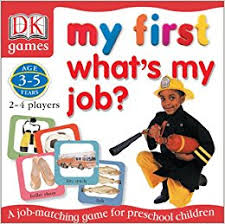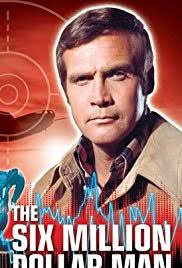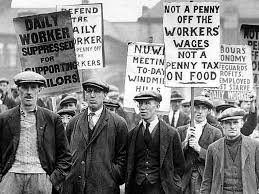I started blogging for 2 reasons. Firstly, it would act as an aide memoir – helping to capture the learning from a diverse range of experiences. Secondly, it would be a form of marketing – directly answering the question: “Is that bloke still alive?” To get people to read the blogs, my sense was that they needed to be (a) short (b) simple (c) memorable (sometimes people remember the jokes more than the content). So, why stop now? When this process kicked off in 2010, my dysfunctional teenage kids provided endless fodder for reflection! They’ve now steadied up (a bit) so that particular source of entertainment has dried up. More importantly, in 300+ individual blogs I’ve said just about everything I have to say about public, private and not-for-profit organisations. So, while I’m continuing to consult, I’m hanging up the biro on this particular adventure. It might be a terrible marketing decisions – but who knows until we try it!
Final Countdown: For this final blog I’ve taken the liberty to select two topics (a) Improving your personal performance (b) developing a highly productive organisation. Here goes….
Lesson #1: Improving Personal Performance: It was a perfect day for golf. 28 degrees, with a slight breeze coming in off the Rio Formosa. Sean O’Connell and Donal Horgan were also ‘on a course’ that day and good company as always. What more could you want?
Eureka: Every Golfers dream is to hit a hole in one. Stand on the tee. Line up the shot. Pull the trigger and bang! Straight into the hole. It happened on July 2018, on the 14thhole in San Lorenzo. A 155-yard shot. Big deal you might say! But, here’s the thing. I’d never had a hole-in-one before. Not in 25 years playing golf. That’s about 2000+ rounds. With 4 opportunities for a hole in one during each round, that’s 8,000+ attempts. The Professional Golf Association (PGA) estimate the odds of a professional golfer scoring an Ace as 1-in-2500. For amateur players, the odds are estimated at 10,000-to-1. Some amateurs, even really good players, never experience the magic (and, it was magic). So, what was already a great day out morphed into a never-to-be-forgotten moment.
Built Over Time: Many years earlier I’d asked Kevin Murphy (then head of Irish Life Investment) a simple question: “How do you get rich?” At the time, I was obsessed with financial success i.e. having enough money to be independent on any individual or institution. His reply was “Slowly.” Kevin’s view was that, in most cases, people get rich slowly. Turns out that improving your personal performance happens in exactly the same way. Slowly. You get exposure to increasingly complex roles. You benchmark best practices, stealing ideas shamelessly from clients and competitors. Where appropriate, you go back to college to deepen your expertise. And, you take feedback on board (the most powerful change tool, assuming your receiver is on). Underpinning all this activity is a single, solitary glorious idea. You are obsessed with becoming the best possible version of yourself. You work towards that goal in a relentless cycle of self-improvement. Over time (like those 8,000 golf attempts) you notch up your game. While there are few moments in managing that are as dramatic as scoring a hole-in-one, you improve your ‘managerial handicap’ over time. Unless, of course, you are a born genius, someone naturally gifted with foresight/hindsight/insight. Those Gobshites don’t need to keep getting better because, in their own mind, they are already brilliant. For mere mortals (i.e. the rest of us), improving personal performance is a lifelong task. The managerial mountain is seldom climbed in a straight line. It’s upwards and across, sometimes even looping backwards. And, here’s the rub. Your ability will be more (or less) than other people’s ability. Your only concern = wringing 120% performance from yourself. Drive yourself to deliver high performance and give yourself the moral authority to push others hard. Perspiration (not inspiration) is the growth hormone. While there may be magic moments along the way, it’s usually a slow/steady climb. Learning to manage is like eating bran for breakfast. A bit boring. But, it works!
Lesson #2: Improving Organisation Productivity: Managing people and organisations is a science. It’s not something you ‘pick up’ because you’re smart at finance, engineering or chemistry. You need to build an equally strong management muscle, becoming a student of great organisation practices. Organisations can be places of enormous opportunity and growth. Or they can be virtual prisons populated with anguished, unhappy people. So, what factors make the difference between a utopian Perfect Plc versus the living hell of being an employee of a dysfunctional organisation? In my experience it’s never about sectors or product type. It’s generally not about Public or Private ownership. Hey, it’s seldom even about money, health benefits or work: life balance. After 35 years consulting I’ve come to the conclusion that the central ‘success factor’ (the central catalyst for building a high-performance and happy organisation), is the quality of the leadership. Can the senior team convince staff that the organisation is chasing a noble goal i.e. they are collectively working on something worthwhile? Do they create the conditions for personal growth, with real efforts made to develop staff? Can they make people feel that the remuneration system is fair? Do they have the guts to tackle underperformance in all of its many guises? And, do they hold themselves to high standards of performance and continual learning? I was going to add that they also need a sense of fun/good humour – but that’s probably a bonus rather than a fundamental requirement.
Short-Term: For sure, in the short-term you can bully people into high performance. You can create a culture of cutthroat competition where only the fittest thrive. There are organisations where, to make yourself seem clever, you have to make others look stupid. But the very best organisations get extra-ordinary performance from ordinary people. How? They are competently led by a quality leadership team and this casts a positive shadow across the organisation. It’s hardly a new idea. In an earlier era, Peter Drucker said: “Managers are the engine of a business.” Bottom Line: Hire the best leaders you can afford. And nurture that talent like a Ferrari engine – to release maximum horsepower. Then sit back and watch the organisation purr.
Thanks for staying with the various rants over the years. I wish you continued personal and career success. Until we meet in person…
Warm Regards
Paul
PPS Lighter Note:
From my daughter Amie in Australia: “I broke one of my fingers at work today. On the other hand, everything if fine.”
A man tells a Rabbi: “I have a strong desire to live forever. What am I supposed to do?”
“Get Married” replies the Rabbi.
“It’s that simple? That would allow me to live forever?”
“No, but the desire will disappear.”
Went to a Sushi restaurant for lunch today. Got a raw deal!
For Sale: Dead Budgie. Not going Cheep.
A conspiracy theorist dies and goes to heaven…
Jesus: “You lived your life as a good man. You may ask me any question and I will give you an honest answer.
Conspiracy Theorist: “Who killed President Kennedy?”
Jesus: “Lee Harvey Oswald, acting alone. He used his own Carcano M91 rifle.”
Conspiracy Theorist: “This goes higher than I thought.”
Last Ever Joke (for people of a certain vintage…)
Paddy goes to the bank for a loan. The Teller says:
“I’m sorry but the Loan-Arranger isn’t in today”
“OK” Paddy replies. “Let me speak to Tonto.”
Check our website http://www.tandemconsulting.ie or call 087-2439019 for an informal discussion about executive or organization development.










